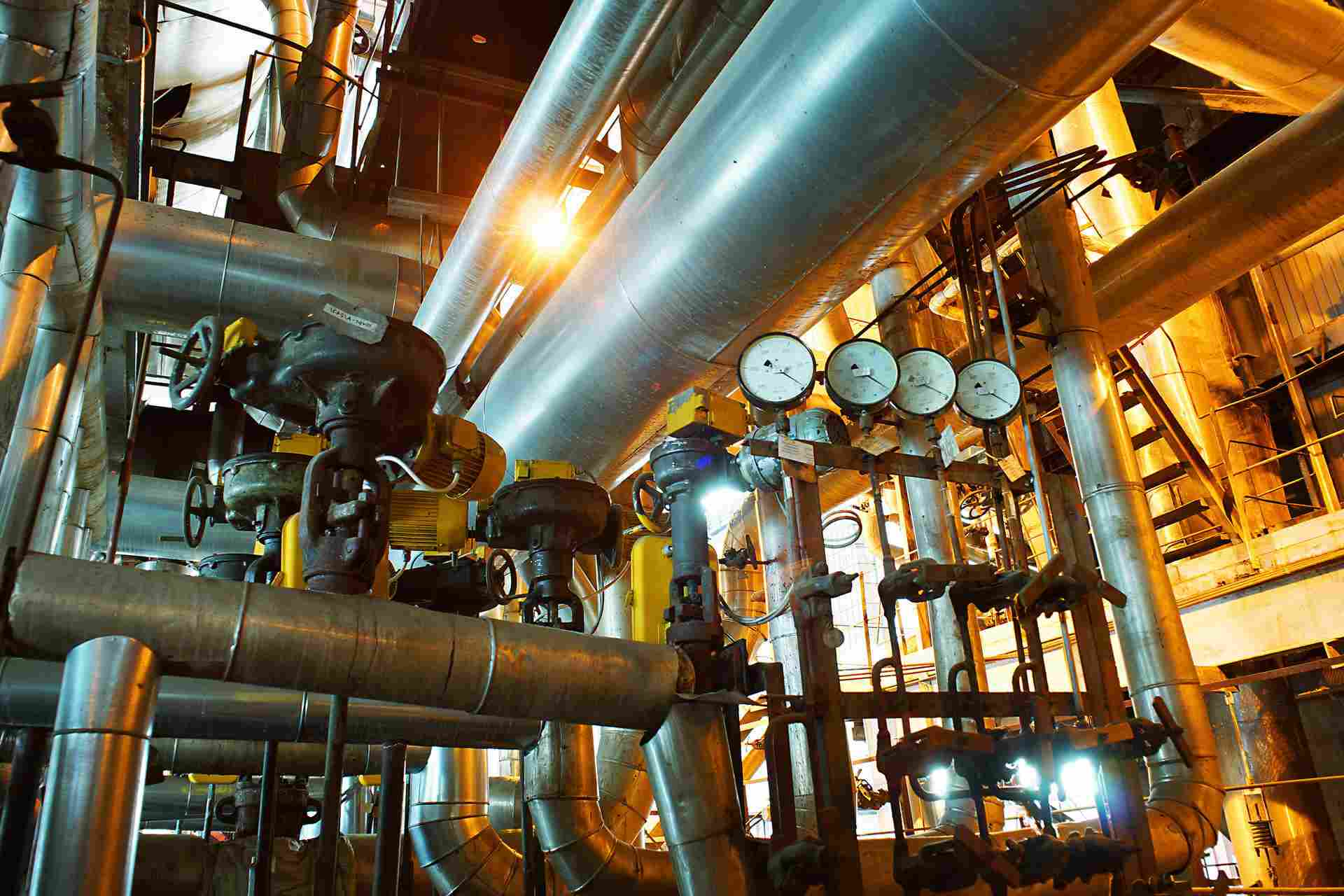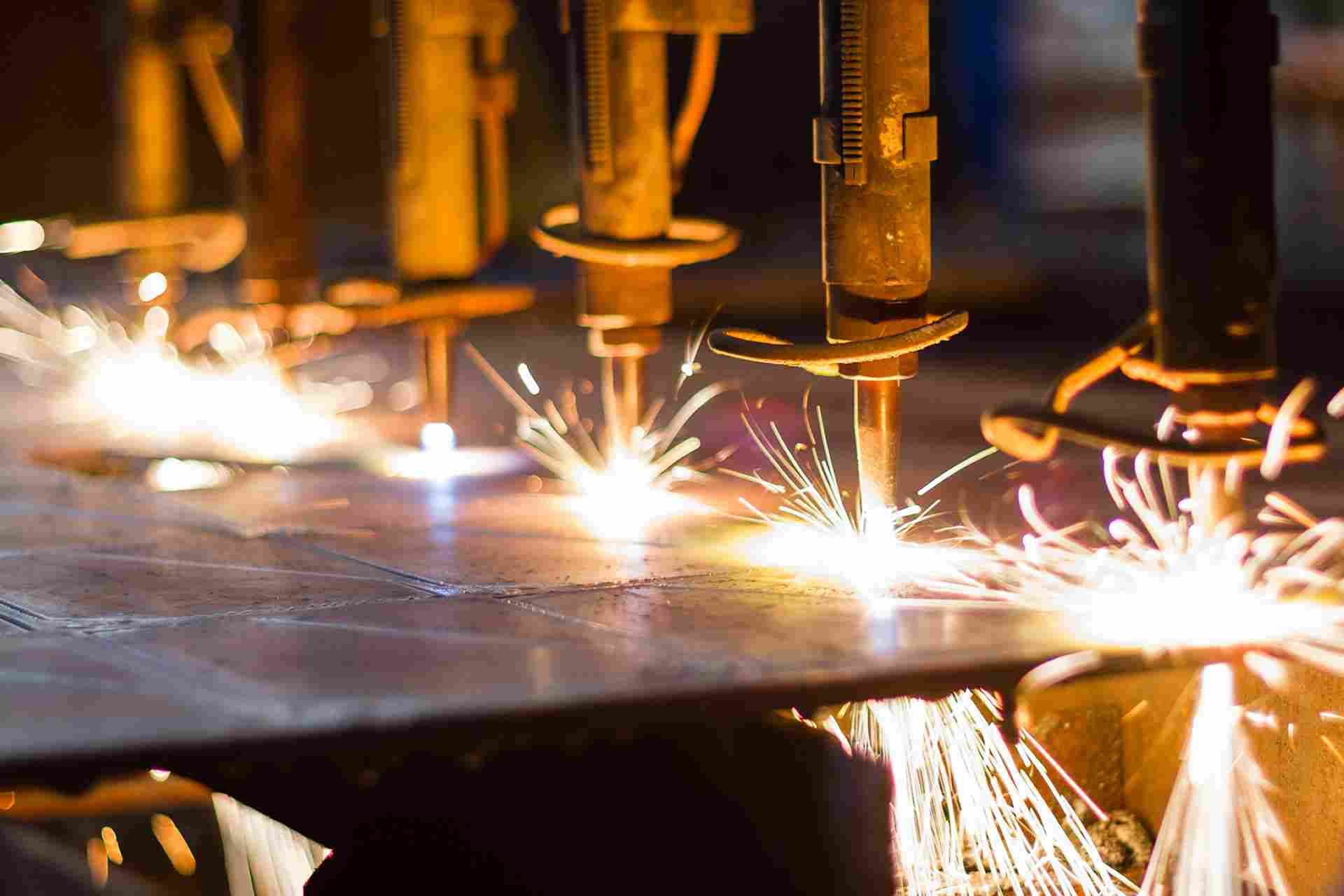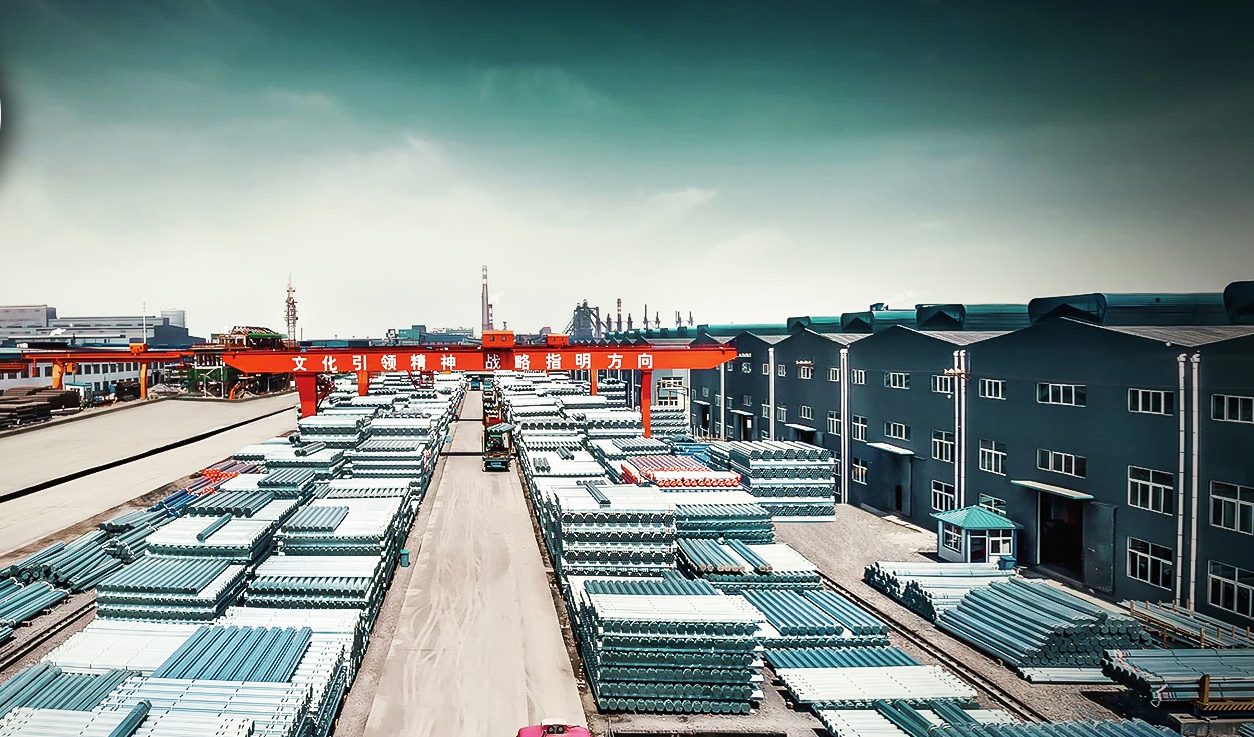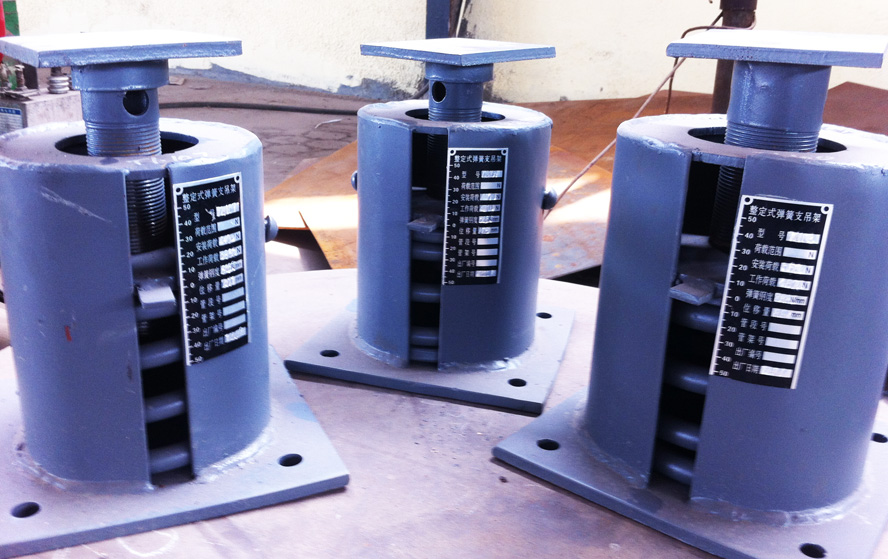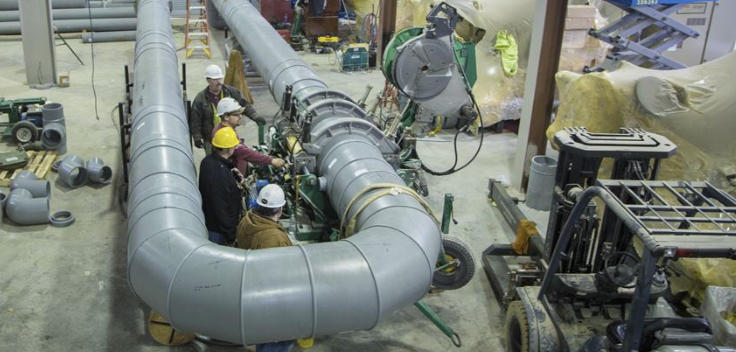Tuberías de acero y procesos de fabricación
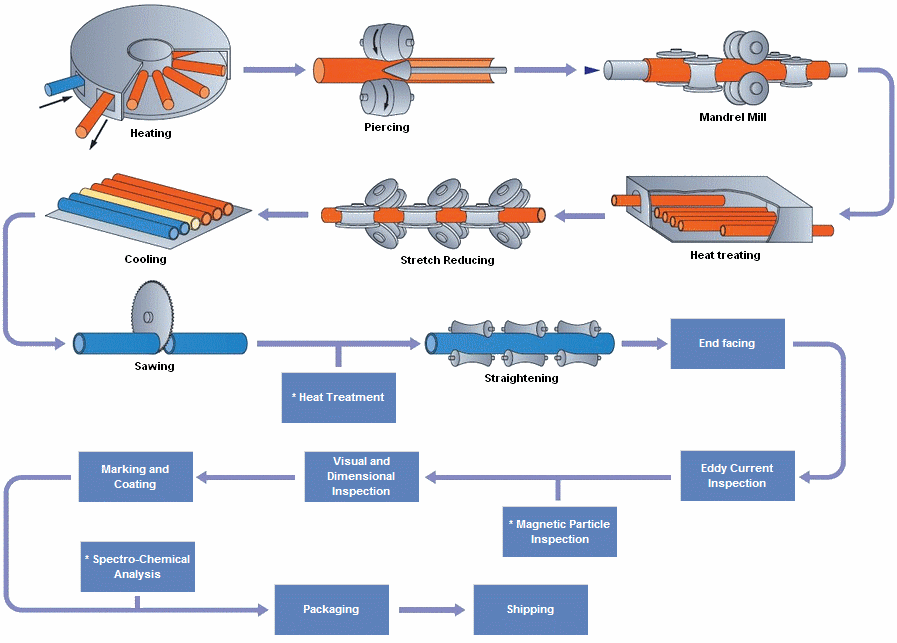
Tuberías de acero y procesos de fabricación
Introducción
El advenimiento de la tecnología de Rolling Mill y su desarrollo durante la primera mitad del siglo XIX también anunció en la fabricación industrial de tubos y tuberías.. Inicialmente, Las tiras enrolladas de hoja se formaron en una sección transversal circular mediante arreglos o rollos de embudo, y luego a tope o vuelta soldado en el mismo calor (Proceso de soldadura de forja).
Hacia fines de siglo, Varios procesos estuvieron disponibles para la fabricación de tubos y tuberías sin costuras., con los volúmenes de producción aumentando rápidamente durante un período relativamente corto. A pesar de la aplicación de otros procesos de soldadura, El desarrollo continuo y la mejora adicional de las técnicas perfectas llevaron a que el tubo soldado fuera casi completamente expulsado del mercado, con el resultado de que el tubo y la tubería sin costura dominaron hasta la Segunda Guerra Mundial.
Durante el período posterior, Los resultados de la investigación en la tecnología de soldadura llevaron a una mejora en la fortuna del tubo soldado, Con el trabajo de desarrollo floreciente y una amplia propagación de numerosos procesos de soldadura de tubos. Actualmente, Alrededor de dos tercios de la producción de tubos de acero en el mundo se tienen en cuenta por procesos de soldadura. De esta figura, sin embargo, Alrededor de un cuarto toma la forma de la llamada tubería de línea de gran diámetro en rangos de tamaño fuera de aquellos que son económicamente viables en tubo sin costuras y fabricación de tuberías.
A medida que se hacen tuberías de acero? (Comentario alemán)

El comentario alemán es brillante…Ojalá entiendas lo que dice y muestra el orador (-:
Tubo y tubería sin costura
Los principales procesos de fabricación de tubos sin costuras aumentaron hacia fines del siglo XIX.. A medida que expiraron los derechos de patente y de propiedad, Los diversos desarrollos paralelos inicialmente perseguidos se volvieron menos distintos y sus etapas de formación individuales se fusionaron en nuevos procesos.. Hoy, El estado del arte se ha desarrollado hasta el punto en que se otorga preferencia a los siguientes procesos modernos de alto rendimiento:
El proceso continuo de laminación del mandril y el proceso de banco de empuje en el rango de tamaño desde aprox.. 21 a 178 mm diámetro exterior.
La fábrica de múltiples pisos (MPM) con controlado (constreñido) Barra de mandril flotante y el proceso de la fábrica de tapones en el rango de tamaño desde aprox.. 140 a 406 mm diámetro exterior.
El proceso de perforación de rollo cruzado y de rodamiento de hilos en el rango de tamaño desde aprox.. 250 a 660 mm diámetro exterior.
Proceso de fábrica de mandril

En el proceso de la fábrica de mandril, una ronda sólida (palanquilla) se usa. Se calienta en un horno de calefacción de hogar rotativo y luego se perfora un perforador. El tocho perforado o la cubierta hueca se enrolla mediante un molino de mandril para reducir el diámetro exterior y el grosor de la pared que forma un tubo madre de longitud múltiple. El tubo madre se recalienta y se reduce aún más a las dimensiones especificadas por el reductor de estiramiento. El tubo se enfría entonces, cortar, Enderezado y sometido a procesos de acabado e inspección antes del envío.

* Nota: Los procesos marcados por un asterisco se realizan especificaciones y/o requisitos del cliente
Proceso de molino de enchufe de Mannesmann

Proceso de molino de enchufe, una ronda sólida (palanquilla) se usa. Se calienta uniformemente en el horno de calefacción de hogar giratorio y luego lo atraviesa un perforador de Mannesmann. La palanquilla perforada o la carcasa hueca se enrolla en el diámetro exterior y el grosor de la pared. El tubo enrollado se bruñía simultáneamente por dentro y por fuera por una máquina de tambios. El tubo de enjuague está dimensionado por un molino de dimensiones a las dimensiones especificadas. Desde este paso el tubo atraviesa la plancha. Este proceso completa el trabajo caliente del tubo. El tubo (referido como un tubo madre) Después de terminar e inspección, se convierte en un producto terminado.

Tubo soldado y tubería
Desde que se hizo posible fabricar tiras y placas, Las personas han tratado constantemente de doblar el material y conectar sus bordes para fabricar tubos y tuberías. Esto condujo al desarrollo del proceso de soldadura más antiguo, el de la revestimiento de forra, que vuelve 150 años.
En 1825, El comerciante británico de Ironware James Whitehouse recibió una patente para la fabricación de tubos soldados. El proceso consistió en forjar placas de metal individuales sobre un mandril para producir una tubería de costado abierto, y luego calentar los bordes de apareamiento de la costura abierta y soldarlos presionándolos mecánicamente en un banco de dibujo.
La tecnología evolucionó hasta el punto en que la tira se podía formar y soldar en un pase en un horno de soldadura. El desarrollo de este concepto de soldado trasero culminó 1931 En el proceso fretz-luna ideado por j. Luna, un americano, y su colega alemán Fretz.
Las líneas de soldadura que emplean este proceso todavía funcionan con éxito hoy en la fabricación de tubo hasta diámetros externos de aprox.. 114 milímetros. Aparte de esta técnica de soldadura por presión caliente, en el que la tira se calienta en un horno a la temperatura de soldadura, Varios otros procesos fueron ideados por la E Americana. Thomson entre los años 1886 y 1890 permitir que los metales sean soldados eléctricamente. La base de esto era la propiedad descubierta por James P. Joule por el cual pasar una corriente eléctrica a través de un conductor hace que se calienta debido a su resistencia eléctrica.
En 1898, La compañía de herramientas estándar, EE.UU, se le otorgó una patente que cubría la aplicación de soldadura de resistencia eléctrica para la fabricación de tubos y tuberías. La producción de tubo y tubería soldados de resistencia eléctrica recibió un impulso considerable en los Estados Unidos., y mucho más tarde en Alemania, Tras el establecimiento de fábricas continuas de rodillos de tira caliente para la producción del material de partida a granel necesario para la fabricación a gran escala. Durante la Segunda Guerra Mundial, Se inventó un proceso de soldadura de arco de argón – de nuevo en los Estados Unidos – que permitió la soldadura eficiente de magnesio en la construcción de aviones.
Como consecuencia de este desarrollo, Se desarrollaron varios procesos de soldadura protegidos por gas, predominantemente para la producción de tubo de acero inoxidable. Siguiendo los desarrollos de largo alcance que han ocurrido en el sector energético en el último 30 años, y la construcción resultante de tuberías de larga distancia de gran capacidad, El proceso de soldadura de arco sumergido ha ganado una posición de preeminencia para la soldadura de la tubería de línea de diámetros hacia arriba de aprox.. 500 milímetros.
Molino de tubería de soldadura eléctrica
Tira de acero en bobina, que se ha cortado en el ancho requerido de la tira ancha, está formado por una serie de rollos de formación en una carcasa de longitud múltiple. Los bordes longitudinales se unen continuamente por la soldadura de resistencia/inducción de alta frecuencia.
La soldadura de la carcasa de longitud múltiple se trata a la cabeza, dimensiones y cortadas a longitudes especificadas por una máquina de corte volador. La tubería de corte se endereza y cuadrar en ambos extremos.
Estas operaciones son seguidas por una inspección ultrasónica o pruebas hidrostáticas.


